#Tasmanian National Park
Explore tagged Tumblr posts
Text
Arch of Tasmania, Tasmania, Australia
© Gary Bell
Minden Pictures

Welcome to Tasmanian National Park, a gem on the island of Tasmania, Australia. This park, which extends over 106 square kilometers, is home to a rich biodiversity: native flowers, Australian seals and small penguins that find refuge in this unique environment.
#Gary Bell#Minden Pictures#Arch of Tasmania#Tasmania Australia#Tasmanian National Park#gem on the island of Tasmania Australia#This park which extends over 106 square kilometers#rich biodiversity#native flowers#Australian seals and small penguins#artists photographie#art#original art#original photographer#photographer#art style#work in art#art word#natural color#photo color#diversity#de tot#fotos art#xpuigc#xpuigc bloc
10 notes
·
View notes
Text

Tasmanian pademelon (Thylogale billardierii) portrait, Cradle Mountain National Park, Tasmania, Australia.
Photographer: Suzi Eszterhas
#suzi eszterhas#photographer#tasmanian pademelon#thylogale billardierii#cradle mountain national park#tasmania#australia#animal#mammal#wildlife#nature
26 notes
·
View notes
Text
The Fascinating World of Extinct Animals: Stories of Lost Species and Conservation Lessons 🌍✨

The DODOD Introduction The story of extinct animals is both a testament to the fragility of life and a reflection of the ever-changing nature of our planet. 🌎💔 Extinct animals, those species that no longer exist, capture our imagination and serve as poignant reminders of the impact humans and natural events have on biodiversity. 🐾📜 In this article, we delve into the causes of extinction, profile some notable extinct animals, and highlight the importance of conservation efforts to prevent further losses. 🛡️🌿 Notable Extinct Animals 1. The Dodo (Raphus cucullatus) Habitat: Mauritius, Indian Ocean 🏝️ Extinction Date: Late 17th century 📜 Causes: The dodo was driven to extinction by a combination of hunting by sailors and predation by introduced species such as rats, pigs, and monkeys. Habitat destruction also played a role. 🚢🐀🐖 2. The Passenger Pigeon (Ectopistes migratorius) Habitat: North America 🌎 Extinction Date: Early 20th century (1914) 📜 Causes: Once numbering in the billions, passenger pigeons were hunted extensively for food and sport. Deforestation also destroyed their natural habitat. 🏞️🍂 3. The Tasmanian Tiger (Thylacine) Habitat: Tasmania, Australia, New Guinea 🌏 Extinction Date: 20th century (1936) 📜 Causes: Hunting, habitat destruction, and competition with dogs contributed to the decline of the Tasmanian tiger. Government bounties also encouraged widespread killing. 🐕🏞️ 4. The Great Auk (Pinguinus impennis) Habitat: North Atlantic coasts 🌊 Extinction Date: Mid-19th century (1844) 📜 Causes: The great auk was hunted for its feathers, meat, and oil. Overharvesting of eggs and human disturbance of breeding sites also led to its extinction. 🌊🐦
5. The Woolly Mammoth (Mammuthus primigenius) Habitat: Northern Hemisphere (Europe, Asia, North America) 🌍❄️ Extinction Date: Approximately 4,000 years ago 📜 Causes: Climate change at the end of the last ice age reduced their habitat. Additionally, overhunting by early humans played a significant role in their extinction. 🌡️🏹 Causes of Extinction 1. Natural Causes Climate Change: Historical climate shifts, such as the ice ages, have drastically altered habitats, leading to the extinction of many species unable to adapt. ❄️🌡️ Natural Disasters: Volcanic eruptions, asteroid impacts, and tsunamis can create immediate and long-term changes to environments, wiping out species. 🌋☄️🌊 Predation and Competition: Evolutionary pressures, including predation and competition for resources, have naturally led to the extinction of less adaptable species. 🐅🍃 2. Human-Induced Causes Habitat Destruction: Deforestation, urbanization, and agriculture reduce the natural habitats of many species, leading to their decline. 🏞️🪓🏘️ Overexploitation: Hunting, fishing, and poaching have driven many species to extinction by depleting their populations faster than they can reproduce. 🎣🏹💔 Pollution: Industrial waste, pesticides, and plastics contaminate ecosystems, causing health problems and deaths in wildlife. 🏭🧴🐢 Climate Change: Human activities such as burning fossil fuels contribute to global warming, affecting the natural habitats and lifecycles of many species. 🌍🔥🏭 Introduction of Invasive Species: Non-native species introduced by humans can outcompete, prey on, or bring diseases to native species, leading to extinction. 🐍🌱🌏 The Importance of Conservation The extinction of species has a profound impact on ecosystems and the services they provide. 🐾🌿 Biodiversity is crucial for maintaining ecological balance, pollination of plants, purification of water, and many other functions essential for life on Earth. 🌍💧 Conservation efforts are vital to protect the remaining species and prevent further extinctions. Here are some key strategies: Protected Areas: Establishing national parks and wildlife reserves to safeguard habitats. 🏞️🛡️ Legislation: Enforcing laws against poaching, illegal logging, and trade in endangered species. 📜🚫 Captive Breeding Programs: Breeding endangered species in captivity to reintroduce them into the wild. 🦏🐣 Habitat Restoration: Rehabilitating degraded ecosystems to support wildlife. 🌱🏞️ Climate Action: Mitigating climate change by reducing greenhouse gas emissions. 🌍🔥 Public Awareness: Educating people about the importance of biodiversity and conservation efforts. 🧑🏫🌿
Conclusion The history of extinct animals is a sobering reminder of the delicate balance of life on Earth. 🌍💔 While the loss of species like the dodo and the Tasmanian tiger can never be undone, we can learn from these events to better protect the remaining biodiversity. 🐾🌿 Through concerted conservation efforts, we can strive to preserve the natural world for future generations, ensuring that more species do not meet the same fate as those that have already been lost. 🌍💚 Join the Conversation! 🌟 If you found this article informative, please like, comment, and share it with fellow wildlife enthusiasts. Together, we can make a difference in protecting our planet's incredible wildlife. 🌟

The Mammoth
#animal#planet#wildlife#plants#animals#nature#forest#nature photography#naturelovers#photos#extinct animals#biodiversity#conservation#wildlifeprotection#saveourplanet#ecofriendly#nature lovers#greenliving#preservenature
14 notes
·
View notes
Photo

Tasmanian Devil (Sarcophilus harrisii) 📍Devils@Cradle, wildlife sanctuary, Cradle Mountain-Lake St. Clair National Park, Tasmania.
📸 @edwardtcjames
14 notes
·
View notes
Text
Wednesday 30th October 2024
Today was to be our second attempt to see the crocodiles in action at Cahill's Crossing. The crossing is named after Paddy Cahill as he used it to access his dairy lease at Oenpelli (issued in 1906).
The causeway links Kakadu National Park with Arnhem Land crossing the East Alligator River, which in time flows out into the Timor Sea way to the north. And of course, the tide is what makes this place very special. The tide today was forecast to be in excess of 5.1m, submerging the stone causeway and allowing the baramundi to travel upstream further to spawn. When you first arrive at the river, it looks much like many rivers an English person would feel at home with; unravelling the picnic blanket, fetching the picnic basket from the car, small dog swims out into the river to secure the worn yellow tennis ball, small child falls dramatically over rock and gets wet feet before screeming. This river, on closer inspection, conceals a menace beyond our worst nightmares. Occasionally appearing on the surface were two, four, six, maybe a dozen or more crocodiles waiting to feed. As the waters rise twice every day, the baramundi will come, and in numbers designed to overcome their adversity and reproduce. The crocs line up across the span of the baramundi's progress, perfectly, in synchrony with the tidal flow, the toes on the end of their stubby feet upturned, engineered to guide the cautious fish directly into an receptive mouth. The crocodiles have now survived a dry season and are hungry. They need this meal, and they will wait the opportunity, which will certainly come their way to feed.
These are dangerous animals. They are opportunistic and will kill and eat anything. We were talking to a Ranger as we awaited the carnage. She had lost her grandson, Gregory, not so long ago. There is a memorial to him by the causeway. He and his wife were crossing the causeway whilst the tide was out. His wife had forgotten her bag, and Gregory said he would go back for it. On his return, he stumbled and hit his head on a rock. A crocodile grabbed him, took him under, and that unfortunately was it. On this day, we were not disappointed with the performance on offer. The crocodiles were not disappointed either. The baramundi were. We stayed until the waters no longer flowed with the same urgency as before, and the Crocs began to move on. Crocodiles too will soon be breeding. The males are aggressive one with another which indicates the mating season. The female will lay some 200 eggs. Eggs are incubated very often by the male, then the hatched baby crocs will have to fend for themselves. Of the 200, only 5 or 6 will grow into an adult, falling prey to others, including their own father!
Soon, the wet season will come and with it the floods. You will no longer see the shape and form of the river as it feels it's way across the Plains. Crocodiles released from the strict confines of the river course will be free to roam at will! Our new Ranger friend informs us that they have 4 months of this; kids travel to school in a boat. In fact all transport is via boat, plane or helicopter!
Close by and with extensive views across the Nardab Flood Plains is Ubirr, pronounced Oobeer, famous for its aboriginal rock art. Usual stuff, but extremely clear panorama of wall paintings consisting mainly of wallabies, turtles, goannas, fish, a Tasmanian Tiger, and even early European figures with their hands in their pockets. These were from approximately 20,000 years ago, right up to the 20th century. Cartoon like paintings were there to help pass on the clan stories from one generation to the next.
Around 3pm again on cue, the skies darkened, the wind came, and the heavens opened to the lights and music of a storm. Thankfully, at this stage, we were once more ensconced on our deck back at the Lodge drinking coffee and eating biscuits; spectators to this free pyrotechnic display.
The storm having abated allowed us time to stroll along the boardwalk that borders the banks of the South Alligator River. Fascinating seeing buffalo on distant plains, crocodiles hiding in the algae, darter birds on the lookout for a late snack, waders wading, a pair of sea eagles in their eyrie, a whole eco system up and running.
ps. What a great day. Wildlife, ancient civilisations, history, gorgeous landscapes. Australia is a fantastic continent.









3 notes
·
View notes
Text
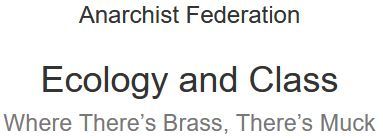

Development: A Class response
Capitalism has created the Spectacle to seduce us, it has appropriated all the planet’s resources and built a vast machinery of control, including states, governments, armies, deathsquads, laws, judges, policemen, prisons, gulags, advertising, schools, socialization, madhouses and the whole process of production and consumption, in order to protect and extend that grand larceny. And to be precise, by capitalism we mean capitalists, real people running real governments and corporations, in huge mansions, wielding vast and shadowy powers. People with great wealth and no ethics, people for whom personal aggrandizement expressed in profit, status or authority is a too powerful opium.
The effect of this is the wholesale destruction of the planet’s biological and social ecologies, the mass holocaust of the poor, in which disasters are only the most visible events in an unrelenting carnage of wars, starvation, pandemics, crippling disease, ignorance, riot and pogrom. A jungle cleared, a shanty bulldozed, a golf course built on sacred land, farms drowned beneath a reservoir, chemical spills into water systems, toxins into the air from urban incinerators. These are not environmental events alone, they are social and economic events, they are battles lost in a class war, if the working class is those who must endlessly produce and yet have no say over what is produced and how. 900m die of hunger every year on a world even the despised UN says could support 14bn people. Is this just drought and famine, environmental events? Or is it because people have been cleared from the land, forced to work for pennies, droughts caused by massive dams or to fill the swimming pools and water the gardens of the rich ?
The environment was and is an area of working class struggle because it is we who suffer most from environmental degradation and expropriation of land, water and clean air. Boycotts of dam projects, nuclear power stations, forest clearances, heavy industry, the dumping of toxins and waste have been social as well as environmental victories for the working class. Early socialists argued strenuously that political and economic struggle was the means to achieve environmental reform. Revolutionaries like William Morris and Kropotkin proposed sustainable economies that were also socially just. The land would be a vast granary, water would run clean and food would be pure, free from chemicals and adulteration. Environmentally-caused diseases like cholera, diphtheria and typhus would be eliminated. These programs of reform grew out of the unrelenting struggle of working class people against bosses and owners, struggles to defend their place within ecologies (such as resistance to clearances or enclosures) or to improve environments that capitalism had ruined (for instance campaigns for clean water, decent housing and sanitation). Their struggle brought reforms, such as nationalized water companies, but because they did not change the nature of either ownership or control, they were only temporary. The same struggles are being waged by the working class in its millions today but most are equally led by reformist leaders. The anti-capitalist movement must re-learn, as the global poor already know, that the revolution must be made by us, here, on the land and in the towns, and not by campaigns against far-off institutions like the WTO or UN or without an end to private property or (so-called) democratic control.
There are a number of examples or workers taking class – based ecological action. In the 1970s, a number of groups of Australian workers instituted Green Bans, boycotting ecologically destructive projects. Builders, seafarers, dockers, transport, and railworkers boycotted all work connected with the nuclear industry, and the Franklin River project – which would have flooded the Tasmanian National Park (including Aboriginal land) for a large hydro-electric project — a victory. Similarly, workers opposed the attempts of the Amax corporation to drill and mine for oil and diamonds on aboriginal land at Noonkanbah. These workers also actively supported the militant occupation of the site by aboriginal people. In Britain, in the 1980s, rank and file seafarers boycotted the dumping of nuclear waste at sea, forcing the government to abandon the policy. In Brazil, rubber tappers forged an alliance with native peoples and environmentalists to oppose the massive deforestation of the Amazon rainforest by big landowners and business interests. Their success led to the murder of union activist Chico Mendes by hired assassins in December 1988, but the struggle continues. Mass direct action by communities (occupations, sabotage and pitched battles with police) prevented nuclear power stations and reprocessing facilities being built at Plogoff in France, and at Wackersdorff in Germany in the 1980s. In Britain communities mobilised in 1987, to end government plans to dump nuclear waste at 4 sites. In Thailand in the early 1980’s, 100,000 people rioted to destroy a $70m steel factory. Following the revolution, the working class worldwide, having seized control of workplaces, land and streets, would direct current technology to benefit the vast majority (the working class) rather than the tiny ruling class minority, as at present.

We have seen that ecological issues and class struggle are inextricably linked. The struggle for a green society where people live in harmony with the rest of nature therefore goes hand in hand with the struggle for a society free from human domination. Capitalism cannot be reformed. It is built on the domination of nature and people. We need to take direct control of every aspect of our lives through social revolution. Collectively seizing control of the land, workplaces and streets, and sharing decisions, work and wealth. Deciding what is produced and how, dissolving the divisions between home, work, and play, and those between people and the rest of the nature.
#anarcho-communism#anarcho-primitivism#anti-capitalism#capitalism#class#class struggle#climate crisis#colonialism#deep ecology#ecology#global warming#green#Green anarchism#imperialism#industrialization#industrial revolution#industrial society#industry#mutual aid#overpopulation#poverty#social ecology#anarchism#anarchy#anarchist society#practical anarchy#practical anarchism#resistance#autonomy#revolution
2 notes
·
View notes
Text
Loonatics KR Bios - Slam Tasmanian


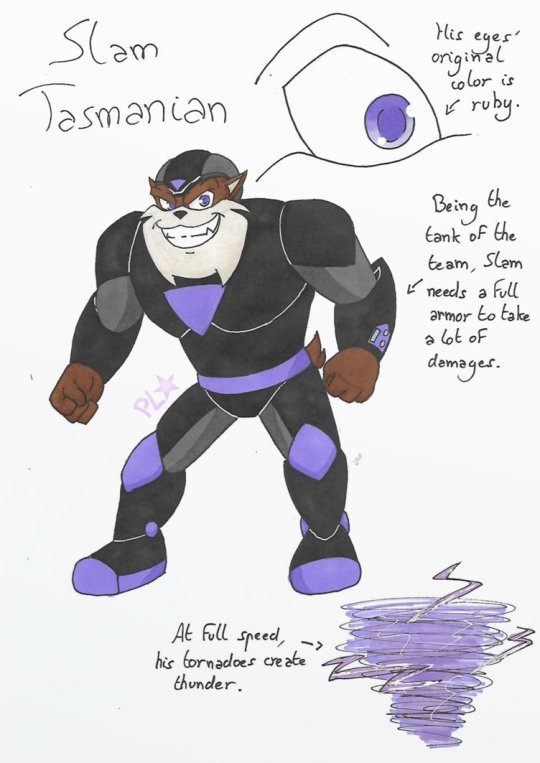
Art created by @purpleluckystar I now adopted. Disclaimer: I now own Loonatics R including the characters and versions of the Loonatics which will soon have updated versions. I'd like you to please do not use or draw this version without permission first.
Name: Slam Tasmanian
Age: 26 (season 1) Nationality: Tasmanian Relatives: Omeo (father), Lowanna (mother), Merri, Daku, Bambam, and Bindi (siblings)
Personality:
Kind-hearted
Warm
Gentle
Likes to be helpful
Most of the time, he is brawn over brains, but he's not dumb either and is in fact quite clever
Powers/Skills:
Superhuman Strength: Helps him lift heavy objects and takes a lot of damage, as it also enhances his durability.
Tornado Maximizer: Creates a tornado when he spins around. If the spin reaches its maximum speed, it can create thunder.
Weapons: None.
Other info:
Had ruby eyes before the meteor. The oldest member of the team. Has a speech impediment; only a handful of people understands him, but Lexi can translate for the rest of the team by reading his thoughts. Has a great appetite, is a real chef in the kitchen. Likes taking care of children. Can be scary-looking at first, but has the personality of a teddy bear.
Slam grew up in a large family on the peaceful Tasmania island, located in Oceania. Though technology wasn't as much developed as it was around the rest of the world, its inhabitants were happy and only cared about more simple things. However, that peaceful life came to an end when an Australian businessman came to Tasmania and declared he would buy all the island's natural territories to build his own business on it, including a vacation complex and an amusement park. Doing such a thing would destroy the natural environment of the island and force the Tasmanians to either live with an afflux of undesired tourists or leave their home, something none of them was willing to do. But if they wanted to save Tasmania, they had to collect enough money to buy the wild zones themselves before the businessman did.
The problem was; because of their simple lifestyle and low economy, they hadn't the requested money. All seemed lost until Slam volunteered to go to America to gather the money, they needed by becoming a professional wrestler - the poor education system in Tasmania limited his access to any university. Once there, he met Alonso, a Mexican mouse who agreed to become his manager and train him to the top. Slam was able to make his way to the finals, meeting the three-years consecutive champion, and then...
A meteor fell near Acmetropolis, ending the match and Slam's chances to help his people. While he's not mad to be part of the Loonatics, Slam is still worried for his home, and understandably so; the dreadful date is slowly approaching, but maybe Slam's team will be able to help him.
Original
#slam tasmanian#loonatics r#loonatics kr#loonatics au#loonatics unleashed#loonatics fan reboot#warner bros#wb#looney tunes#slam tasmanian kr
39 notes
·
View notes
Text
Taking on Tasmania (Week 8)
For those of you who, like myself, have questioned whether Tasmania is a real place or not, I can officially confirm that it is! The island-state south of mainland Australia was once the destination for 80,000 convicts and was referred to as Van Diemen’s Land before its name was changed to Tasmania and the island became its own Australian state in 1901. Now, Tasmania is the smallest state of Australia by both size and population, with just about 570,000 residents out of Australia’s 26 Million. For just about 4 days, five of my hostel-mates and I rented a car and made it our mission to see as much of the island as possible. After landing in Launceston, Tasmania’s second largest city, we picked up our car rental and went into the small downtown area where we grabbed breakfast and then headed straight for the library. The library? Yep, the realities of traveling during the second week of school are that online exams are already being assigned… for me. While I spent that Thursday studying and taking my 2.5hr exam for fluid mechanics in a Tasmanian library, my friends were out exploring Ben Lomond National Park. As soon as 5pm struck and my exam was submitted, I was picked up and we headed to our Airbnb near Cradle Mountain, about 2 hours away. This was the view I woke up to the next morning:

Friday was spent hiking near Cradle mountain at the renowned Dove Lake trail and Enchanted Walk. Despite the rain and noticeably colder temperatures compared to Sydney, we were blown away by the beauty of the diverse landscapes at the surrounding national park. We were also saddened to learn that Tasmanian Devils and Wombats are nocturnal and would not be joining us for our hikes like their poops did every few steps.
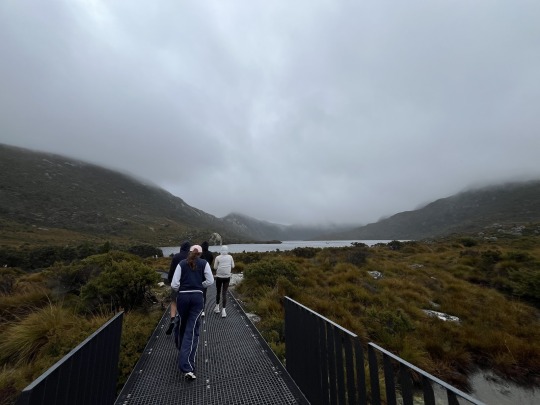
^^Dove Lake pictured above with unfortunately low visibility.
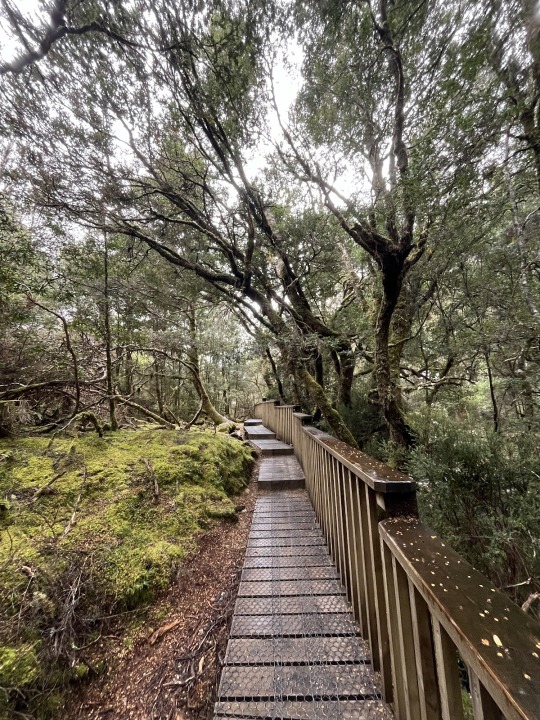
^^ The Enchanted walk with a truly magical Flora.
The drive to Hobart, Tasmania’s largest and capital city, was just as memorable. From rolling hills with a seemingly infinite number of cows and sheep, to mountains peaking at the horizon, Tasmania was everything I had expected Australia to be.

Hobart was just as wonderful having access to the coast and mountains all together. We spent our Saturday wandering around the Salamanca Markets which displayed incredible Tasmanian woodwork, refreshing our knowledge of contemporary art at the MONA (Museum of Old and New Art), driving up Mount Wellington to see the city from above, and cooking our own Tasmanian steak dinner at our AirBnB.
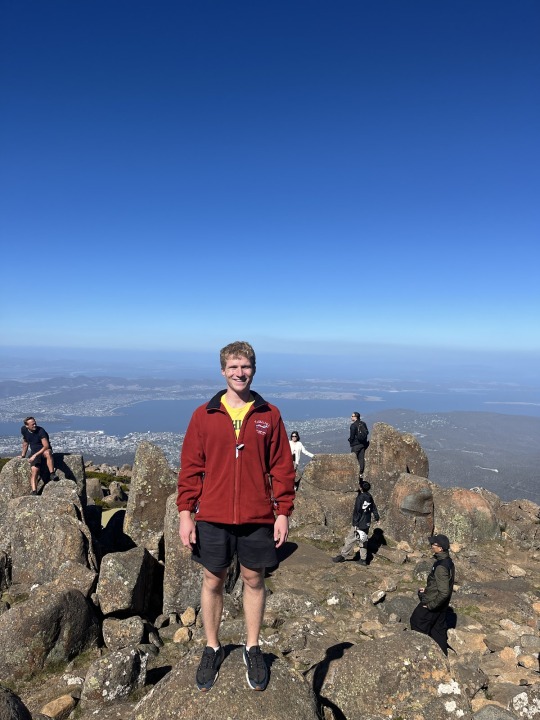
^^ Me at the top of Mount Wellington in a jacket I had just purchased from the Markets!
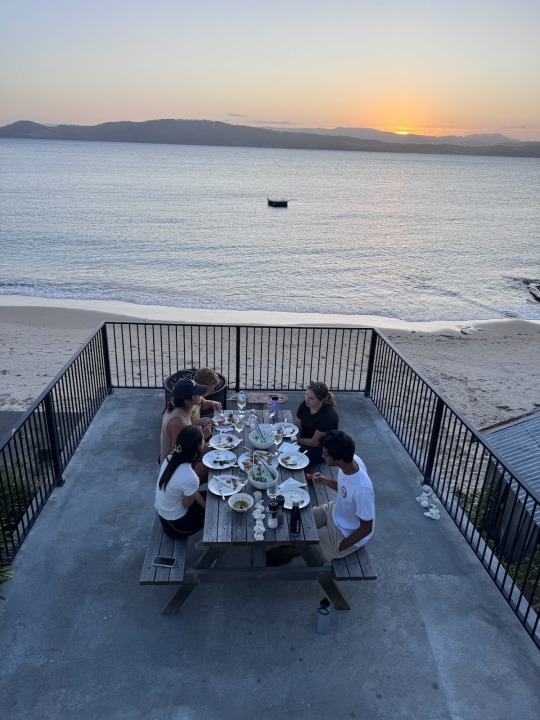
^^ The group after devouring two steaks, salads, and a mound of sweet potatoes while enjoying the sunset over the water and mountains.
On our last day, we booked it back to Launceston where we had to return the car by noon and three of my friends had to fly back home, leaving the rest of us in the city for the day which gave us the chance to see Cataract Gorge, a forested river reserve surrounding a remarkable gorge.

^^ Cataract Gorge!

^^ A particularly photogenic peahen at Cataract Gorge.
David Bayer
Biomedical Engineering
University of New South Wales in Sydney, Australia
2 notes
·
View notes
Text
Best Outdoor Adventures for Kids in Australia

Australia offers some of the most exciting outdoor adventures for kids, from exploring wildlife and nature reserves to thrilling adventures in unique outdoor locations. If you're looking to plan an outdoor getaway with the little ones, here’s a roundup of kid-friendly outdoor spots Australia has to offer.
Adventure Park Geelong
Adventure Park is a thrilling family-friendly theme park that features water slides, adventure playgrounds, and even a mini roller coaster. Kids will love the splash zone and the giant wave pool, perfect for a summer day of fun!
Corin Forest
Located just outside Canberra, Corin Forest is the perfect spot for snow-filled fun in the winter months. Kids can enjoy tobogganing and sledging down snowy hills, or explore nature walks and picnic areas in warmer months. A fun escape for outdoor adventurers!
Cycle Canberra
Explore Canberra’s beautiful landscapes and attractions with Cycle Canberra Bike Hire, the perfect way for families to enjoy an active, eco-friendly adventure. They offer bike options for all ages, including child seats, tagalongs, and pedal-assist electric bikes. Ride through scenic trails, visit iconic landmarks, and embrace sustainable tourism. Convenient delivery options and easy online booking make it a hassle-free choice for your next family outing.
Basecamp Wallaroo
For a truly unique experience, Basecamp Wallaroo offers an outdoor adventure with a difference. It’s an interactive experience that includes rock climbing, outdoor games, and guided nature tours. Kids can explore the beauty of the Northern Territory whilst enjoying some fun and team building physical activities.
Busselton Jetty
The iconic Busselton Jetty in WA is a must-see, especially for families. Kids can enjoy a train ride to the end of the pier, and from there, they can explore the underwater observatory to view marine life in the crystal-clear waters of the Indian Ocean.
Whiteman Park
Whiteman Park,just outside of Perth, offers a range of outdoor activities for kids to enjoy, from wildlife parks to bike rides and playgrounds. The Caversham Wildlife Park within the park is a highlight, where kids can pet kangaroos, cuddle koalas, and learn about Australia's diverse wildlife.
Tahune Airwalk
Located near the Huon River, in Southern Tasmania, the Tahune Airwalk offers an elevated walkway through the treetops, where kids can experience the beauty of the rainforest from above. The Scenic Helicopter Ride is an additional treat for those who want an even more thrilling experience.
Devils@Cradle
Devils@Cradle is a must-visit outdoor attraction in Tasmania. Located near world famous Cradle Mountain, kids can witness the rare Tasmanian devils and other native animals in their natural environment. The sanctuary offers guided tours where kids can learn about conservation efforts while observing these fascinating creatures up close.
The Ultimate Family Getaway
Australia offers an incredible range of outdoor adventures for kids, from thrilling theme parks and wildlife sanctuaries to breathtaking national parks and fun-filled outdoor escapes. Whether hiking, wildlife spotting, or enjoying water parks, these experiences guarantee unforgettable family fun. Pack up and head outdoors for the ultimate Australian adventure!
1 note
·
View note
Text
A Journey Into Wilderness: Wild Tasmania Tours Adventures

Tasmania is a treasure trove of natural wonders, offering visitors the chance to escape into pristine wilderness, witness extraordinary wildlife, and uncover its rich cultural heritage. For anyone seeking an immersive experience in this island's raw beauty, Wild Tasmania Toursy is your gateway to unforgettable adventures.
Why Choose Wild Tasmania Tours?
Wild Tasmania Toursy is a premier provider of curated tours that showcase Tasmania's breathtaking landscapes and unique attractions. From the rugged coastlines to lush rainforests and snow-capped mountains, every journey is tailored to connect you with the island’s true essence. Here’s what makes Wild Tasmania Tours stand out:
Authentic Experiences: Wild Tasmania Toursy crafts personalized itineraries to provide authentic interactions with the island’s flora, fauna, and culture. Whether you're a nature enthusiast, history buff, or food lover, there’s something for everyone.
Knowledgeable Guides: The team at Wild Tasmania Tours comprises passionate locals who know Tasmania inside out. Their deep knowledge of the island enhances every tour, providing insights you won’t find in guidebooks.
Sustainable Travel: Committed to preserving the environment, Wild Tasmania Toursy prioritizes eco-friendly practices, ensuring your adventures leave minimal impact on the pristine landscapes.
Highlights of Wild Tasmania Tours
Cradle Mountain-Lake St Clair National Park
A trip to Tasmania isn’t complete without exploring Cradle Mountain. Known for its dramatic peaks and crystal-clear waters, this national park offers a variety of walking trails suitable for all skill levels. Whether you’re embarking on the Overland Track or enjoying a leisurely stroll around Dove Lake, you’ll be mesmerized by the natural beauty.
Freycinet Peninsula and Wineglass Bay
Discover the iconic Wineglass Bay, with its turquoise waters and pristine white sands. Wild Tasmania Toursy provides guided hikes that allow you to soak in panoramic views of the Freycinet Peninsula, a haven for outdoor enthusiasts.
Tasmanian Wildlife Encounters
Tasmania is home to some of the world’s most unique wildlife, including the Tasmanian devil, wombats, and echidnas. With Wild Tasmania Tours, you’ll have opportunities to observe these creatures in their natural habitats. Special night tours also offer a chance to witness nocturnal animals in action.
Port Arthur Historic Site
Step back in time and explore the history of Tasmania at the Port Arthur Historic Site. This UNESCO World Heritage-listed location offers a poignant look into Australia’s colonial past. Guided tours by Wild Tasmania Toursy bring the stories of this site to life, creating a truly enriching experience.
Gourmet Food and Wine Adventures
No visit to Tasmania is complete without indulging in its culinary delights. Wild Tasmania Toursy includes stops at local wineries, artisanal cheese makers, and seafood hotspots, offering a taste of the island’s world-class produce.
Tailored Tours for Every Traveler
Whether you’re seeking adrenaline-pumping adventures or peaceful retreats, Wild Tasmania Toursy has something for everyone. Their customizable packages cater to solo travelers, families, and groups, ensuring a personalized experience.
Adventure Seekers: For thrill-seekers, Wild Tasmania Tours includes activities like kayaking, mountain biking, and canyoning.
Relaxation Lovers: If relaxation is your goal, unwind in serene landscapes and enjoy spa retreats.
Photographers: Capture the island's unspoiled beauty with tours designed for photography enthusiasts.
For more details, you can visit us:
Wildtasmaniatours
Backpacker Tours Tasmania
Tasmania 2 day tour
0 notes
Photo

Tasmanian snow gum and pandani plants near Lake Dobson, Mount Field National Park, Tasmania, Australia (© Whitworth Images/Getty Images)
0 notes
Text

Lake Mungo’s Geological and Archaeological Treasures
The southwest corner of New South Wales, Australia, is a remote, semi-arid desert dotted with sheep pastures, dryland farms, and ample space for kangaroos to graze. But starting around 2 million years ago and through most of the Pleistocene, it hosted a system of large lakes, around which Australia’s First Peoples lived for millennia.
Archaeological evidence indicates that humans arrived in what is now known as the Willandra Lakes Region approximately 50,000 years ago. They would have had access to freshwater mussels, crustaceans, and fish, as well as emus and marsupials. As the climate changed and the ice age drew to a close, the lakes shriveled, became more saline, and ultimately dried up around 18,500 years ago.
This image, acquired on October 21, 2024, by the OLI-2 (Operational Land Imager-2) on Landsat 9, shows the remnant of one of these Pleistocene waterbodies, Lake Mungo. The dry lakebed is distinct for the large lunette dune fringing its eastern shoreline. These types of crescent-shaped mounds form on the downwind side of enclosed desert depressions. The Lake Mungo lunette, built up by the wind over the past 50,000 years, measures approximately 30 kilometers (18 miles) long—large enough to be easily visible from space.
The dune has preserved an array of archaeological and geological treasures. Researchers have noted that all layers of the dune contain archaeological remains, indicating that humans occupied the area through various environmental conditions. In addition, a menagerie of megafaunal remains includes those of the giant marsupial and wombat-relative Zygomaturus trilobus, the large flightless bird Genyornis newtoni, the Tasmanian tiger, and giant kangaroos.
Famously, the remains of “Mungo Lady,” uncovered in the lunette dune in 1968, have been dated at 40,000–42,000 years old. They represent the oldest human remains found in Australia and are among the earliest anatomically modern human remains discovered anywhere in the world. The similarly aged bones of “Mungo Man” were found a few years later. The two skeletons provide some of the earliest evidence of cremation and ritual burial.
Scientists have also turned up clues about our planet’s past at the site. In the 1970s, researchers found evidence for a “geomagnetic excursion” baked into 30,000-year-old hearths preserved there. Excursions are significant changes to the intensity of Earth’s magnetic field and the orientation of its magnetic poles. Whereas complete magnetic pole reversals occur about every 300,000 years on average, excursions may happen 10 times as often and on a regional scale.
Today, the effects of various land management practices are visible as sharp contrasts in color on the semi-arid landscape. “The lines you can see in the images are fence-line boundaries between Mungo National Park and neighboring pastoral properties that mostly graze sheep,” said Mike Letnic, an applied ecologist and conservation biologist at the University of New South Wales.
Wild herbivores such as kangaroos and rabbits, along with domestic animals, graze in the brighter area containing the western portion of Lake Mungo’s lakebed, which is outside of the national park. Within park boundaries, grazing is limited to wild animals. But according to Letnic, grazing pressure on the land is still high because these herbivores have no predators regulating their populations.
NASA Earth Observatory image by Wanmei Liang, using Landsat data from the U.S. Geological Survey. Story by Lindsey Doermann.
1 note
·
View note
Link
#BayofFiresCoastalWalk#CradleMountainHikes#FreycinetPeninsulaTrails#MariaIslandTreks#MountFieldDiscoveries#OverlandTrackAdventures#SouthwestNationalPark#TasmaniaNationalParks#TasmanianWildernessExploration#ThreeCapesTrackJourneys
1 note
·
View note
Text
Global Birdwatching Adventures: Top Destinations You Need to Know
Birdwatching, or birding, has evolved into a global adventure that draws enthusiasts to some of the most breathtaking and biodiverse regions of the world. Whether you're a seasoned birder or just beginning your avian journey, these top birdwatching destinations offer unparalleled opportunities to observe rare species, immerse yourself in stunning natural environments, and connect with a global community of like-minded nature lovers.
1. Pantanal, Brazil

The Pantanal, the world's largest tropical wetland, is a paradise for birdwatchers. With over 650 bird species, including the iconic Hyacinth Macaw and the striking Jabiru Stork, the Pantanal offers some of the most vibrant birdlife on the planet. The dry season, from July to October, is the best time to visit, as birds flock to the shrinking water bodies, making sightings more frequent.
2. Mindo, Ecuador
Mindo, located in the Andean cloud forest, is a hotspot for biodiversity and a prime destination for birdwatching. Home to over 500 bird species, including the Andean Cock-of-the-rock and a variety of hummingbirds, Mindo is a must-visit for birders. The area’s easy accessibility and well-developed birdwatching infrastructure make it ideal for both beginners and experts.
3. Kruger National Park, South Africa

Kruger National Park is renowned for its diverse wildlife, and its avian population is no exception. The park is home to over 500 bird species, including the Saddle-billed Stork, Martial Eagle, and the elusive Pel’s Fishing Owl. The best time for birdwatching in Kruger is during the wet season, from November to February, when migratory birds arrive.
4. The Danube Delta, Romania
The Danube Delta, a UNESCO World Heritage site, is one of Europe’s best-kept birdwatching secrets. This vast wetland is home to more than 300 species of birds, including pelicans, herons, and cormorants. Spring and early summer are ideal for birdwatching, as migratory birds return to nest in the delta’s marshes and lakes.
5. Rajasthan, India

Rajasthan, with its diverse habitats ranging from desert to wetlands, is a birdwatcher’s delight. The Keoladeo National Park, also known as Bharatpur Bird Sanctuary, is a UNESCO World Heritage site that attracts thousands of migratory birds, including the rare Siberian Crane. Winter, from October to February, is the best time to visit, as the park teems with birdlife.
6. Tasmania, Australia
Tasmania offers birdwatchers a unique opportunity to see a range of endemic species, such as the Tasmanian Nativehen and the endangered Forty-spotted Pardalote. The island’s diverse ecosystems, from coastal areas to temperate rainforests, provide habitats for a rich variety of bird species. Birdwatching is excellent year-round, but spring and summer are particularly rewarding.
7. Manu National Park, Peru
Manu National Park is a UNESCO World Heritage site that boasts one of the highest levels of biodiversity on Earth. With over 1,000 bird species, including the Harpy Eagle and the Cock-of-the-rock, Manu is a dream destination for birdwatchers. The park's remote location and the need for guided tours make it an adventure in itself, but the birding rewards are well worth the effort.
8. Hokkaido, Japan

Hokkaido, Japan’s northernmost island, offers unique birdwatching experiences, particularly in winter. The island is famous for the Red-crowned Cranes, which perform elegant courtship dances in the snow-covered fields. Additionally, Steller’s Sea Eagles and Blakiston’s Fish Owls are among the other winter highlights.
9. Yellowstone National Park, USA
Yellowstone National Park is not only famous for its geothermal features but also for its rich birdlife. The park is home to over 300 bird species, including the Trumpeter Swan, Bald Eagle, and the American Dipper. Spring and early summer are the best times to visit, as the park’s diverse habitats come alive with bird activity.
10. New Zealand
New Zealand is a haven for birdwatchers, offering a chance to see species found nowhere else in the world. The country’s endemic birds, such as the Kiwi, Kakapo, and Takahe, are among the top attractions. Birdwatching is excellent year-round, but spring and summer offer the best chances to see breeding activity and migratory birds.
Conclusion
These top birdwatching destinations offer something for everyone, from lush tropical wetlands to rugged mountain landscapes. Whether you’re ticking off species on your life list or simply enjoying the beauty of birds in their natural habitats, these global birdwatching adventures promise unforgettable experiences and a deeper connection with the natural world. So grab your binoculars, pack your bags, and embark on a journey to discover the incredible diversity of the world’s avian life.
0 notes
Text
Spiders and Wallabies and Leeches, Oh my! (Week 3)
From the massive spiders to the venomous snakes, people can’t stop talking about all the creatures of Australia. To be honest, as much as I don’t like being around spiders, I’ve been itching to see some wild species here that I won’t be able to find anywhere else in the world. Though, I wasn’t exactly itching to see them in my Airbnb. My hostel mates and I had just arrived to our new home for the next 4 days in the Gold Coast when a giant brown Huntsman spider decided to show us around what was apparently its humble abode. As much as we wanted to see a big spider, we didn’t want to live with it, so a quick cup-and-paper-slide maneuver moved it outside. I guess the large spiders of Australia are itching to see some Americans as much as we are itching to see them!
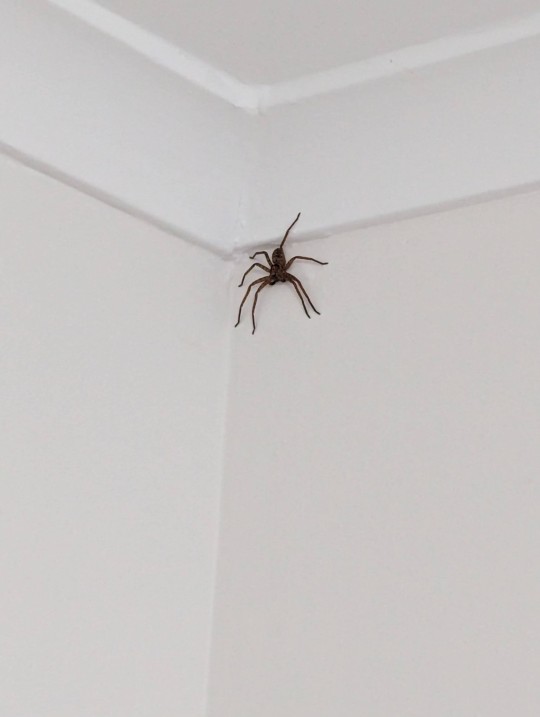
The next two days at the Gold Coast, the Miami of Australia (there is quite literally an area called Miami Beach), were full of more beaches and nightlife. When I first stepped foot on Burleigh Heads Beach I felt like I was on another planet. The shore went on for miles and curved around with the city skyline in the distance. The water was so shallow and the wave current pulled at us like a horse at a carriage. We felt like we’d wandered onto a planet from Star Wars. Unfortunately, the beach we were at didn’t have the best conditions for surfing so we left that endeavor for another time and just let the beauty sink in. The next day at Rainbow Bay Beach proved similar with just as incredible views and even a rainbow to satisfy the name.
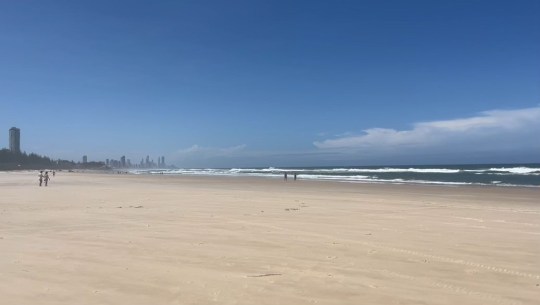
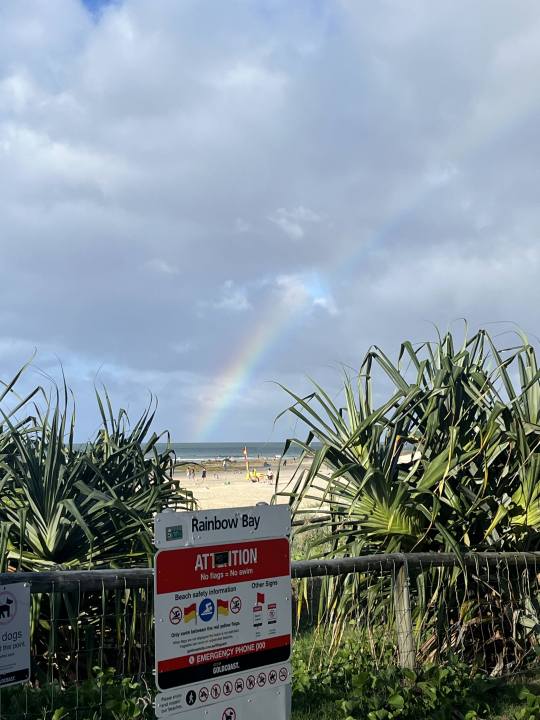
Pictured above are the vast Burleigh Heads Beach and Rainbow Bay beach.
Our final day at the Gold Coast warranted a trip to the nearby Springbrook National Park. It being my first time in an Australian rainforest, I was determined to see a koala munching on some leaves, but my attempts at manifestation came to no avail. Instead, on our way out of the park, two hopping wallabies (which we first thought were baby kangaroos) chose to make my day. Just moments earlier we had bumped into a family that told us kangaroos are as common in Australia as deers are in the US - a fact I could not believe until 5 minutes later when I thought I saw my first kangaroo.
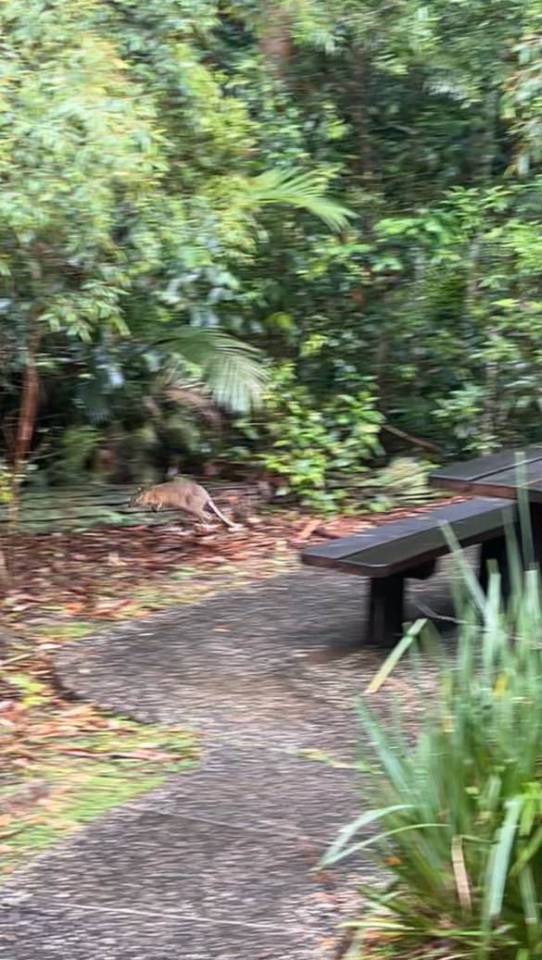
One of the two hopping wallabies!
Another guest appearance on the hiking trip was the leech! And by “the leech!” I mean the formidable, constant flow of tiny leeches that plagued us from the ground, water, and air. I managed to evade them all, but my mates were not so fortunate and had a lot of battles with the relentless blood-sucking monsters. I left the Gold Coast content with the fact that I had come face-to-face with the largest spider I’d ever seen as well as the fact that the largest spider I had ever seen was thousands of miles away from Coogee beach.
A few days later I finally saw my first koala and kangaroo at the Sydney WILD LIFE zoo followed by the SEA LIFE aquarium. I was very excited by all the marsupials, and my personal favorite, the Tasmanian Devils. The creatures of Australia are truly one-of-a-kind and I can't wait to see more in the wild!
David Bayer
Biomedical Engineering
University of New South Wales in Sydney, Australia
2 notes
·
View notes
Text
12/08/24
I have not felt so famished for anything as I have for the sun and the heat in this last month of Tasmanian winter.
A hunger deep in my blood and bones.
A yearning, a longing.
An innate craving that brings a rise of primal joy to all my cells once my skins warms enough that the goose bumps fall.
I see people in the summer sun of the northern hemisphere or in films, sweating inside the screen of my laptop. It makes me feel the deepest sense of loss. Grief in the layers of clothing on my body.
You’d think I’d truely been sent to the Arctic. No. No. I am just dreadfully dramatic experiencing something new. Last winter I spent half of the season in the snowfields, yet this seems to have a much sharper depth to the discomfort I feel. So foreign here.
WA gets cold in the winters, sure. I haven’t forgotten that. Though not relatively bad and it always seems as though for not too long. It feels strange with the travel I have done only nationally these past couple of years, that I spent my whole life in one place.
I feel much more conscious to life this year. Perhaps the sobriety or perhaps it’s just age. Maturing as you might hope to.
I’ve decided to come back to Perth in October or November. Things still remain gently up in the air. Gentle as clouds. Intangible but with expectation.
I have missed it you see. I can tell just how much with the nostalgia I have placed on the mundane parts of living in the state.
Driving north on the Kwinana freeway after a trip down south. The warm night air rolling in through the windows wound down. Slowly heading east and ending up on the Tonkin, winding a different route to the one I remember as a child but giving all the old exits just the same. Bright hot mornings, a call from one sister to another about who wants what coffee and if Ma already had one or not? Wondering if it’s warm enough for the beach still or if the dr was in?
I miss my family. I laugh out loud writing this. Of course that seems normal and only natural, but I spent a long while trying to lovingly separate my lives of ‘family’ and ‘me’ only to now wish to be close. I giggle at the thought of my Ma’s confused face at a plan she had made. Or my Pa’s cheeky chuckle at joke outdated or not even funny. I miss my the colloquialisms of my family. My sister adding “that there” where that shouldn’t be there. My other sister’s humour and my twins offence to affection and her giving into it too. I miss her dog with human like eyes.
I miss the parks, the trees, the beaches, the swan river winding through Bayswater and the benches we’d sit on, there at the dog park. I miss Maylands and even Midland. I miss Fremantle and Cottesloe. I miss Margaret River, Denmark, Albany all of it. I miss the Kimberly deeply.
I’m not sure how long I’ll last this time, but I can say I’m excited to see. I’m excited to go to Morley and wonder who I’ll spot this time, as I have 98% success rate of seeing someone I know there. I’m excited to see my best friend. To see old friends, to consider new friends. I’m excited to take my Pa to the Movies and my Ma to the park. To drive down Beaufort and shake my head like a stubborn old woman at how the place is changing, yet somehow my ex’s tags are STILL there. To go have a look at my old apartment and remind my family who haven’t forgotten, that I really did used to live there.
I’m excited to drive through the city and through suburbs and think about all the houses I’ve lived in. I’m excited to see which one I’ll live in next.
I’m eternally grateful to have a place to love. To find home wherever my place my head. To have the freedom of autonomy over my path and the courage to pursue it. I am grateful that regardless of time, I’ll always think of home on the west coast. I’ll think of it fondly.
1 note
·
View note